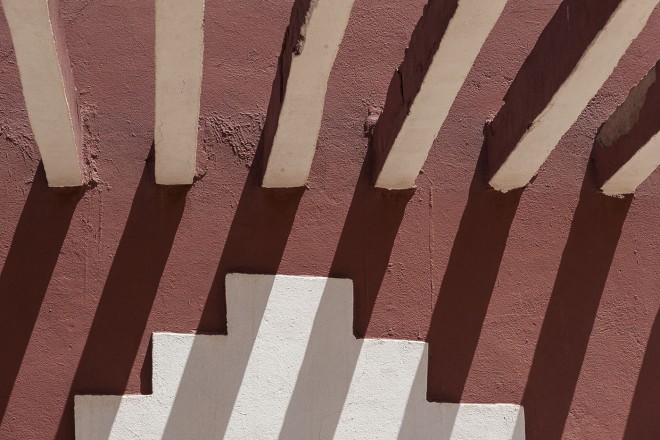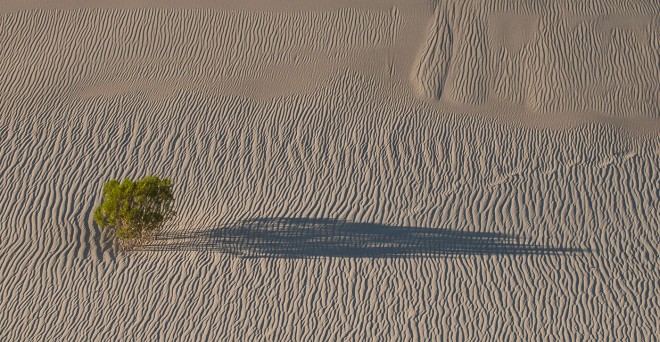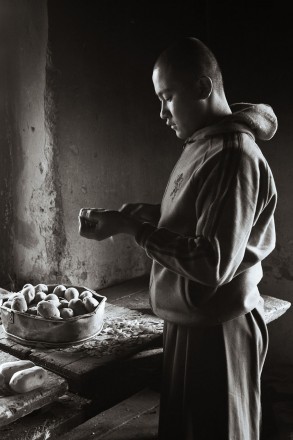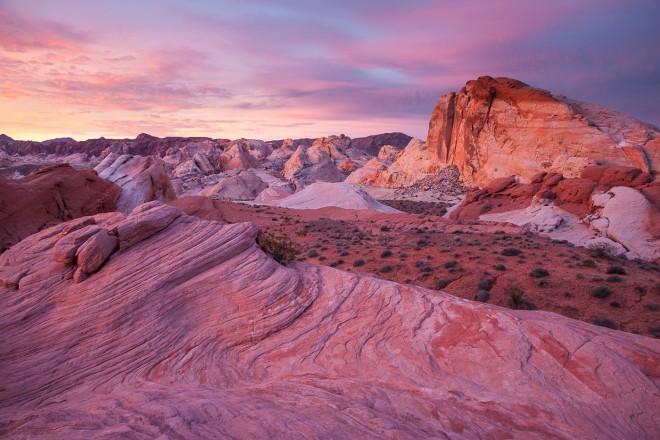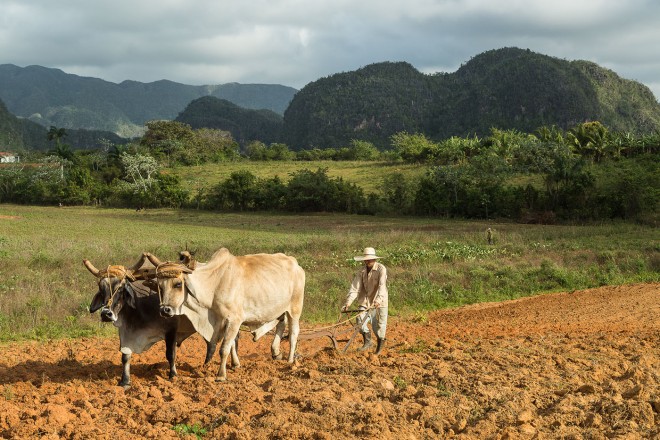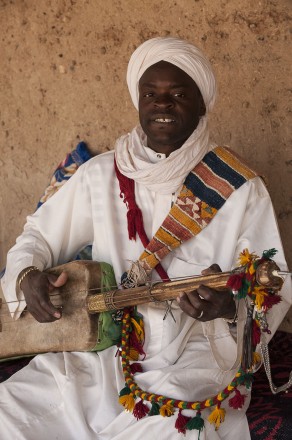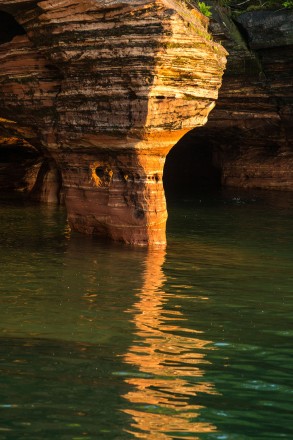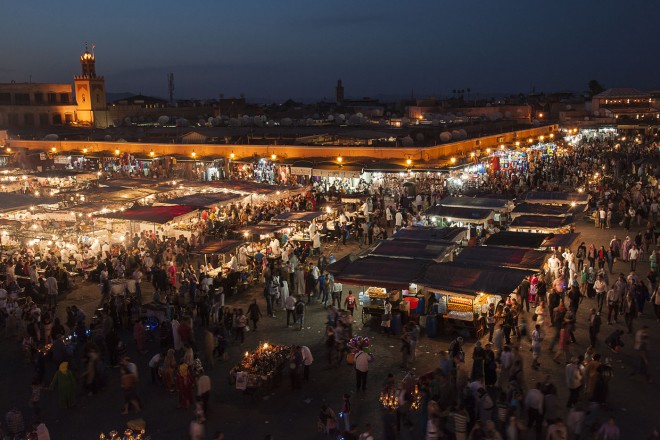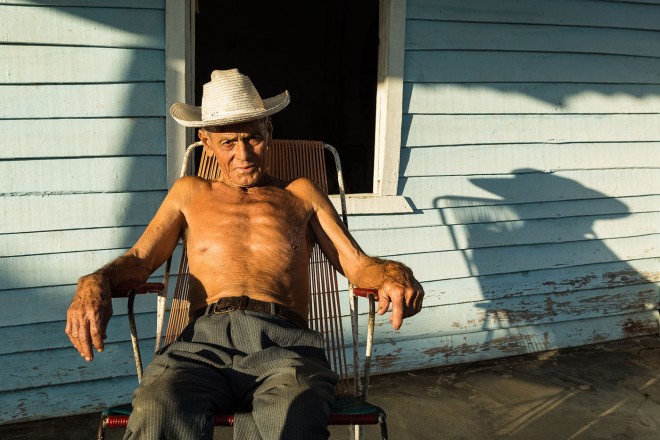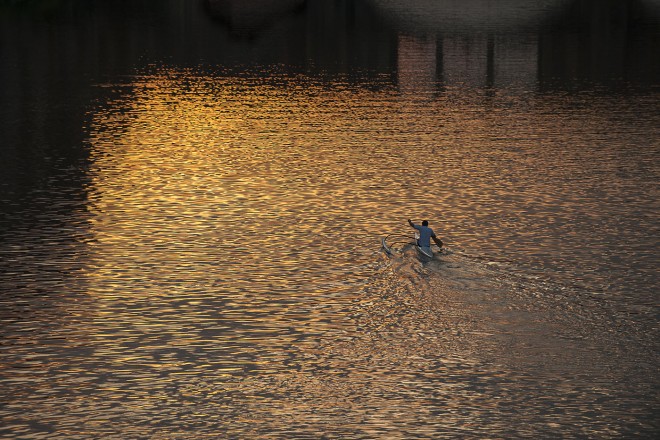Conversations in Light: Extraordinary Everyday Photography

Brenda Tharp and Jed Manwaring are the authors of Extraordinary Everyday Photography: Awaken Your Vision to Create Stunning Images Wherever You Are. The book is born of years of collaboration as photographers and instructors. We brought them together to discuss how they each have come to use light in their outdoor and travel photography.
This issue:
Brenda Tharp TRAVEL AND NATURE PHOTOGRAPHER
Brenda Tharp (www.brendatharp.com) is a professional travel and nature photographer whose work has appeared in Outdoor Photographer, Audubon, Forbes, and other magazines. Her clients have also included the National Audubon Society, Canon, the National Park Service, and the Sierra Club.
Jed Manwaring LANDSCAPE, CITYSCAPE, AND NATURE PHOTOGRAPHER
Jed Manwaring (www.jedmanwaring.com) is a professional photographer whose images have appeared in publications, including Outdoor Photographer, Outside, and Sunset. He has contributed to several books and leads photography workshops with his partner, Brenda Tharp.
Ibarionex Perello: In your book, you emphasize learning to see within your immediate surroundings and not necessarily waiting for the weekend or a vacation. Why do you believe it’s important for photographers to learn to see light in their everyday world?
Manwaring: A good example of this is the other day when I was working with a woman who hired me for private classes. We went on a location to shoot and on the way back, during midday, we happened to see some fungus on the side of a tree. We got out of the car and I had her take a picture of it. Then I got out a diffusion disc and softened the light. Then she was able to get some wonderful pictures just from understanding how she could soften hard light in a simple way. All of a sudden a whole other realm opened up.
Perello: Yes, a lot of people will avoid shooting entirely when they think the light is bad.
Manwaring: A lot of my students think that a cloudy day is a horrible day for photography. It’s on those very days that I take them out to shoot and they find that they can shoot all day on such days. I also show them that on some bright, sunny days that they might move into the shade or use light bouncing off of a wall to avoid those bright, sunny areas.
Tharp: When we did the book, one of the things that was driving us was that for a long time outdoor photographers were taught that you shot only using morning light or late afternoon light, because that was the best light. It certainly is a very sweet, pretty light. But we started to think about the rest of the day. The sun shines throughout the day; there is still light to be used if you understand how to use the light that you have. If it’s 11:00 in the morning, that might not be the right light for one subject, but it could be useful light for something else.
Perello: It’s about seeing the light and not being so quick to label it as bad, and not making any effort to make a photograph.
Tharp: In the Extraordinary, Everyday Photography class that we’re teaching, we’re taking students out at noon and we’re encouraging them to use the light that we have and find subject matter that this quality of light helps to illuminate. It’s about finding a subject that works under these conditions. It may be shadows or it may be an awning that’s being backlit because the sun is overhead.
Manwaring: Or looking at windows and searching for reflections.
Tharp: Right, that’s where we’ve tried to get people to see that there are other times of the day. You can still photograph if you pay attention to light.
Perello: One of the challenges to developing that awareness is separating the subject from the light that’s illuminating it. By that, I mean it’s a challenge for a photographer to develop an eye for the light itself rather than being focused on a person or thing or a scene. So, how do you help someone to make the transition from seeing the subject and instead pay greater attention to the qualities of the light?
Manwaring: One of the things that I have my students do is squint. It helps them to see what areas will be blown out or what areas will be too dark. So, once they realize that what they are seeing may be beyond the ability of the camera to handle, they start to see those values of the light. Then I talk to them about the quality of the light and what we are seeing. So, throughout the day, I am constantly asking them to pay attention to where the light is coming from and what it’s doing. Is it direct light or is it bounced light?
Perello: Right. It’s about developing an eye for the light even before you begin making photographs.
Manwaring: We had a student in Morocco who kept walking into direct and hard light to do his shooting of this marketplace. I made him squint and explained to him the highlights were going to be blown out against all this dark that was part of the scene. So, I made him walk into the shaded area and I had him make some photographs. He was blown away by the colors he got. This was because the bounced light that was lighting the fruit stands was warm and soft. When he was standing in the bright light, he couldn’t see that.
Tharp: And it was regardless of whatever subject they were photographing in the market. We’re also teaching them to pay attention to what the light is doing right in front of them, whether it’s a chair or an awning or whatever.
Perello: That’s really essential.
Tharp: The last time we taught this class, we limited the students to shoot in and around the hotel where we were holding the course. So, they had to walk out of the classroom and begin looking—paying attention to the light—whether it was indirect and diffused or direct, harsh, sunny lighting. They didn’t have a subject in mind. It was literarily to find things that spoke to them because of the light.
Manwaring: And to react to that alone.
Tharp: It’s a hard thing to teach, but the goal is to get them to see the light and look past the fact that they’re looking at a fire hydrant, for example. It’s about looking at what the light is doing with that fire hydrant.
Perello: Absolutely. I’ve seen it in my own teaching where once the photographer learns to see the light first and foremost, their images change dramatically. It’s like looking at the work of a completely different photographer.
Manwaring: I’ve had students that get it with the light, but they mess up with the overshooting issue in the sense that they fail to pay attention to the lighting in the background. There may be some distracting element there that pulls the viewer away from the point of focus. One of the important issues about understanding light is being aware that bright things draw your attention in a photo. So, you may be aware that the light on this flower is wonderful but you have this bright sidewalk in the background, which ruins the effectiveness of the photograph. You have to change your position or crop it out. It comes down to learning how to simplify, because if you can get the eye to focus on one thing, it’s much more powerful.
Tharp: I think that’s a difficult thing in the everyday world, especially since we live in this color world. They might be photographing this beautiful flower, but there’s this bright yellow element in the background. It’s been easy for us to teach people to learn how to see bright colors, but I’m also trying to teach people how to see light that has nothing to do with color. The color itself can be very misleading because your attraction to the color may not necessarily have anything to do with the light. So, they begin to notice the tonality of color, such as the fact that yellow will be a lighter tonality and thus a brighter element in the photograph.
Manwaring: We try to get them to think in black and white because sometimes when you show them an example of the image in black and white, the color no longer becomes an issue.
Perello: Do you find it helpful for people to set their cameras to record in black and white as a means for gaining this sensitivity or awareness to color and light?
Manwaring: Well, they can do that, but we will often show them a color version and then a black-and-white version, and sometimes that alone helps them to see. The squinting helps but sometimes setting your camera to record in black and white can help.
Tharp: Unfortunately, not all cameras will do that, but I have often suggested it as an exercise for people when we’re in the field. It’s a little difficult because we’ve been conducting instructional tours in locations such as Zion National Park, and people don’t necessarily want to go black and white. They want the option to convert later. Even though they’re shooting RAW and can convert later to color, there’s a resistance to setting the camera to black and white.
Manwaring: On a recent trip, somebody didn’t want to do that and I pulled out my phone, which has the capability to record a black-and-white photograph. It becomes a proofing device and it really helps to get them looking. So, since everybody is carrying phones with this capability, they can shoot a simple black and white to get a visual sense of tonality and brightness.
Perello: You both do a lot of travel for your photography and teaching. How important is research and having an understanding of your destination in influencing your ability to make the most of the light?
Tharp: I think the research is important if you really want to work with the optimal quality of light for a particular place or subject. If you know that the temple faces east, you know that the better light will be happening at sunrise, rather than sunset. For my next trip to Burma, I have the benefit of having a guide who’s a photographer and knows light. It’s an advantage in that I have someone who is not only a ground operator, but someone who intimately knows all of these places that we’re going to. I’m leaning on him to be at the right place at the right time. So, combined with his knowledge and experience and my own research, it should be terrific.
Perello: How about for those who are going on a trip without the benefit of a guide or photographer, or as part of a workshop?
Tharp: If I was going on my own and haven’t been there, I would do as much research as I could up front for some of the iconic locations. However, there’s also a certain amount of magic to be had by simply showing up at a place and finding the photographs that aren’t the standard, classic façade of the temple at sunrise. Those are easy. Everyone is going to get that kind of picture. So, I like to say that we’re still going to aim for this spot for first light, then we’re going to work beyond that and use the light that we have to make other pictures. I really want to push people to think beyond the obvious.
Perello: The reality is that many people travel as part of a vacation, so they don’t have the benefit of an experienced photo guide or a photocentric itinerary. They’re traveling with family or friends and are often relegated to shooting during midday when the light is less than ideal. What tips or suggestions can you offer photographers who are faced with having to photograph under those circumstances?
Manwaring: Go into the shadows. An example of this is Death Valley. In the morning, everyone goes for the morning light across the dunes. But once the sun comes up, it’s too harsh and high to shoot the general landscape. That’s when it becomes important to look down into the canyons, at the sides of walls, or to look for bounced light. You might look at the shadow side of a dune where the light might still be skimming it a bit. Pay attention to the areas where you might not normally go.
Perello: What about shooting in an urban environment?
Manwaring: Say you’re in Italy on the street. Remember to go into the shadow area where the bounced light is and look around there. Let your eyes adjust and don’t think that you need direct sunlight on something in order to make it look interesting.
Tharp: Remember that hard light provides a great time to work with details. This is because the bright sun is creating shadows that are ideal for a graphic shot or to capture texture. It could also be an ideal time to do a portrait where you have someone in the shade of the street who is being illuminated by reflected light coming from behind the photographer. When we were in Cuba, we’d walk down the street and there would be this wonderful bounced light coming in from this dirt path and the buildings on the other side, and it would pour light into people’s windows and doorways. In many cases, we were able to get inside or, if not, we would photograph people against some of those colorful walls. The glow of light on a person’s face was just beautiful.
Manwaring: One time, National Geographic wanted some pictures of Sausalito. So, Brenda and I raced down to the city and thought we’d get some pictures. There was this neat little store that I wanted to photograph, but it was on the shaded side of the street and there was no light in it. There was nothing going on. So, I was walking away when I saw a FedEx truck pull in front of the store and I noticed that the sun was hitting the side of the truck. I saw the whole front of the store light up. So, I ran back down and got a shot. It was a really nice shot because the bounced light off the FedEx truck lit up the store. And because the logo is red and purple, the reflected light had a warm quality to it that added a little bit of color. Sometimes, the most unexpected things will produce light.
Perello: If you were to suggest an exercise for photographers who want to develop their ability to see and use light, what would it be?
Tharp: I think one of the best exercises is to go out and look for the shadows of things, rather than the things themselves. Pay attention to the shadows and see what interesting photographs you can make this way.
Manwaring: The other would be to shoot using only reflected light.
Tharp: It’s really about going out with the idea of looking for a specific type of light. So, it would be to look for things where the light is creating shadow or look for pictures in areas where the light is bouncing off of something else and is being reflected into the area where you’re going to photograph.
Manwaring: Because once you understand bounced light, I think it will really improve your seeing of light. It will teach you to understand the subtleties of light, which people often miss in the overall, big picture.

